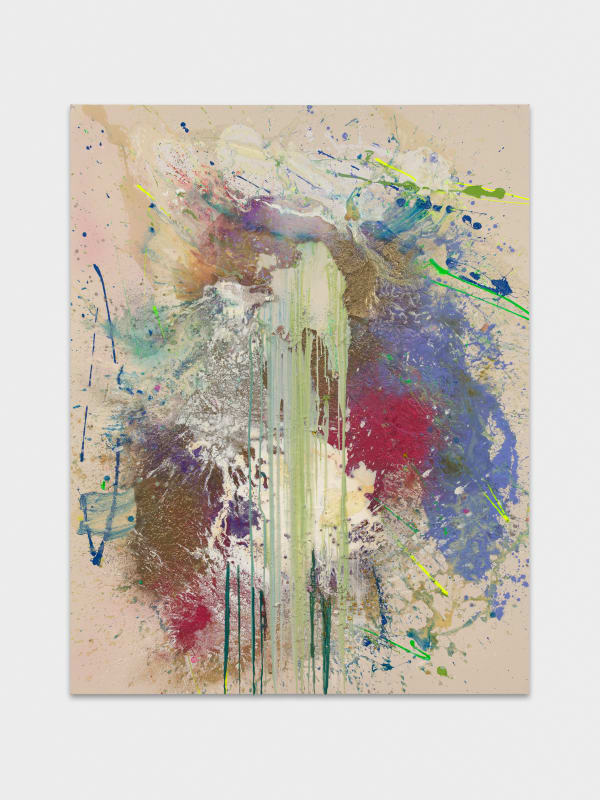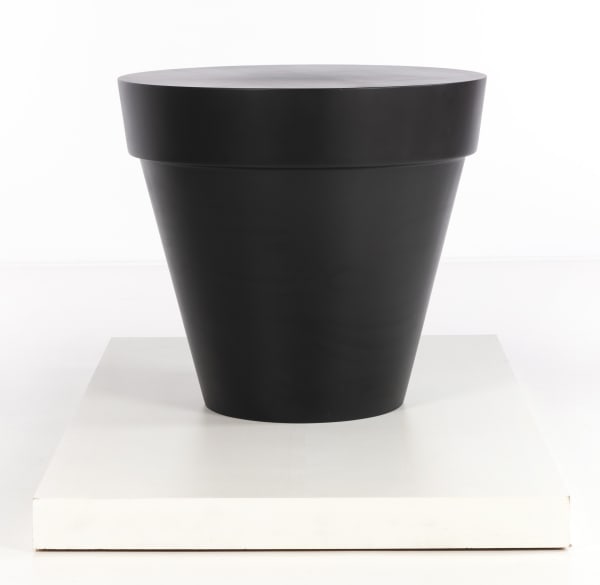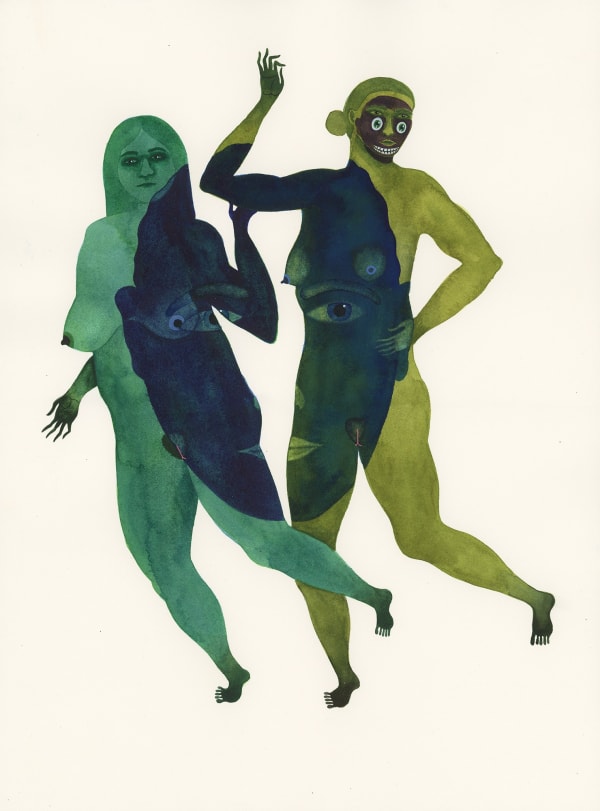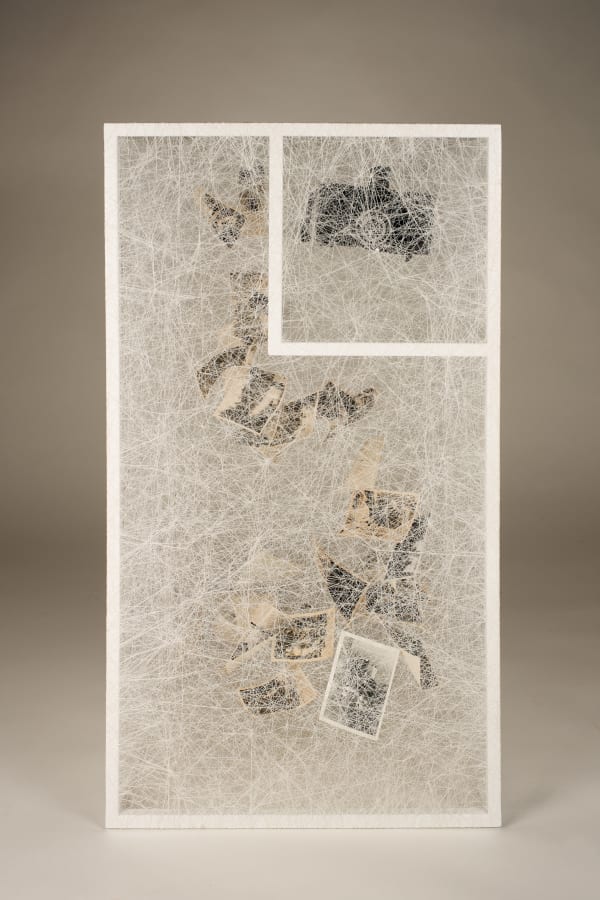Présences Croisées: Geneva
PRÉSENCES CROISÉES is a cross-generational and transdisciplinary exhibition which brings together leading voices from modern and contemporary spheres to explore the layered concept of ‘presence’. Spanning painting, drawing, sculpture, installation, kinetic art, the exhibition features a constellation of voices – ranging from from post-war pioneers to contemporary experimenters—invites viewers to consider how human perception is shaped by rhythm, memory, motion, and absence.
The exhibition moves fluidly between the intuitive and the constructed. Henri Michaux's ink drawing embodies psychic automatism, whilst Jean Dubuffet’s raw, unfiltered surface captures primal expressions of the human psyche. Roman Opalka's obsessive numeric sequence confronts the notion of time itself, counting toward an unreachable infinity. Similarly, Jean-Pierre Raynaud’s clinical tiles and sculptural fragments explore control and containment, questioning the structures we live within—physically and psychologically.
Movement, both literal and metaphorical, runs throughout the show. Jean Tinguely’s drawing for a kinetic sculpture celebrates chaos and entropy, in dialogue with Conrad Shawcross, whose engineered machine marries mathematics and aesthetics in a search for logic within disorder. Meanwhile John Armleder’s playful and genre-defying painting and works on paper challenge formal conventions, embracing chance and interdisciplinary collision.
Contemporary artists offer new intersections of material and metaphor. Chiharu Shiota envelops her spaces with webs of thread, trapping memory in a fragile architecture of absence. Tomás Saraceno's structures imagine new ecologies of coexistence, suggesting alternative networks between humans and the cosmos.
Rachel Marks and Benoît Mazzer explore presence through transformation—Marks through her paper/music installations, Mazzer through philosophical inquiries embedded into perceptions of nature.
Stéphane Kropf deepens the perceptual dimension of the exhibition with his abstract painting, where layers of lacquer, optical interference, and subtle modulation prompt an almost physical response from the viewer. His works engage presence as an experience of visual instability, hovering between material precision and perceptual flux.
Narrative and figuration emerge with striking urgency in the work of Dana Schutz, whose work shows a body wrestling with chaos and intimacy, and also for Balint Zsako, who combines myth, memory, and eroticism into surreally configured, richly coloured images. Toby Ziegler and Alain Jacquet both manipulate visual languages drawn from art history and digital culture, blurring originality and reproduction.
The act of mapping is central in Emma McNally’s graphite world— a dense, meditative drawing that charts invisible systems and sonorous space. Jean-Pierre Raynaud’s Fragment de Ménil, like McNally’s diagrams, isolates structure to reflect on presence through absence. Meanwhile, Ziegler and Saraceno echo and expand these cartographies into digital and spatial registers.
In bringing these diverse practices together, Présences Croisées asks how we inhabit time, space, and memory—how traces, gestures, and patterns converge into presence. It is an invitation to navigate a living field of crossings, where voices from different moments and materials resonate in silent dialogue.
-
 John Armleder, Hededypnosis Cretica, 2023
John Armleder, Hededypnosis Cretica, 2023 -
 Alain Jacquet, L'Arrosoir, 1972-1975
Alain Jacquet, L'Arrosoir, 1972-1975 -
 Jean-Pierre Raynaud, Fragment de Menil, 1984
Jean-Pierre Raynaud, Fragment de Menil, 1984 -
 Jean-Pierre Raynaud, Pot noir, 1985
Jean-Pierre Raynaud, Pot noir, 1985 -
 Jean-Pierre Raynaud, Sans Titre (3 lignes), 1984
Jean-Pierre Raynaud, Sans Titre (3 lignes), 1984 -
 Jean Dubuffet, Personnage dans un paysage, 1960
Jean Dubuffet, Personnage dans un paysage, 1960 -
 Henri Michaux, Sans titre, 1959
Henri Michaux, Sans titre, 1959 -
 Roman Opalka, Infini Détail 1627999-1631391, 1965
Roman Opalka, Infini Détail 1627999-1631391, 1965 -
 Balint Zsako, Physical Comedy 4, 2024
Balint Zsako, Physical Comedy 4, 2024 -
 Balint Zsako, Physical Comedy 69, 2024
Balint Zsako, Physical Comedy 69, 2024 -
 Chiharu Shiota, STATE OF BEING (CAMERA), 2023
Chiharu Shiota, STATE OF BEING (CAMERA), 2023 -
 Chiharu Shiota, Connected to the Universe (23), 2023
Chiharu Shiota, Connected to the Universe (23), 2023 -
 Conrad Shawcross, Slow Arc Inside a Cube X, 2018
Conrad Shawcross, Slow Arc Inside a Cube X, 2018





































